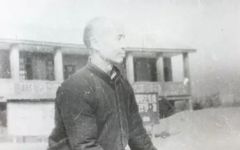Taijiquan Philosophy
Basic Methods: Taijiquan employs basic methods such as “peng, lu, ji, an, zhong, elbow, kao, jin, tui, gu, pan, ding”. The movements are slow and smooth, requiring the practitioner to maintain a straight back, relaxed jaw, and upright posture, embodying a sense of floating like clouds. At the same time, Taijiquan places great emphasis on cultivating “qi” (vital energy), which refers to the cultivation of one’s own spiritual power, a characteristic of Taijiquan as an internal martial art.
The essence of Taijiquan lies in the integration of intention (yi), energy (qi), and spirit (shen). Therefore, the early masters of Taijiquan summarized the principles as “use intention, not force; focus on intention, not form; heart guides intention, intention guides qi, qi moves the body; regulate breath to surpass body movement, nourish qi to attain gold.” Nowadays, many practitioners often overly focus on the external form of Taijiquan, neglecting the internal aspects of “intention” and “qi”, akin to “losing the watermelon while picking up sesame seeds”.
Key Principles of Taijiquan Philosophy
First, Top of the Head. The head should not lean forward, backward, left, or right, but should be relaxed and upright, as if suspended in mid-air. Many martial arts also emphasize keeping the head straight, but they require force. This does not imply that other martial arts are inferior, but using force can affect blood pressure in patients with hypertension.
Second, Relaxed Shoulders. This should not be misunderstood as shrugging the shoulders or letting them droop. Instead, the shoulders and back should be relaxed without exerting force.
Third, Dropped Elbows. The elbow joints should carry weight, as the postures in Taijiquan are complex, and many movements can inadvertently lead to a horizontal elbow position. The chest should remain unaffected by qi, feeling light and relaxed.
Fourth, Contained Chest. Not puffing the chest means naturally keeping the torso upright without collapsing the chest inward.
Fifth, Straight Back, referring to the spine. Taijiquan uses the waist as the axis to drive the limbs, so this axis must not bend.
Sixth, Qi Sinking to the Dantian. The Dantian refers to the lower abdomen. Based on the principles of top of the head, relaxed shoulders, dropped elbows, contained chest, and straight back, the entire body should be naturally relaxed and breathe naturally, allowing qi to sink to the Dantian. In practicing Taijiquan, it is said “start with intention moving”, as Taijiquan emphasizes practicing “intention” rather than force; “followed by internal movement”, meaning the internal “qi” moves next; “finally external movement”, where the external actions are expressed last.
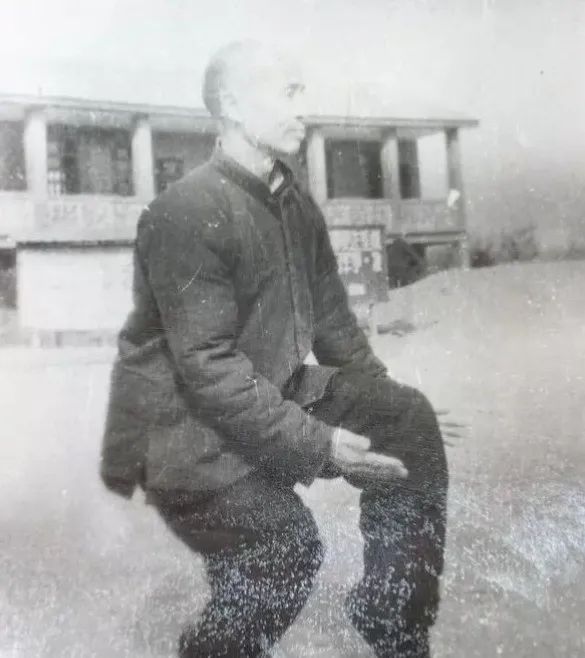
Requirements of Taijiquan Philosophy
First, Correct Posture. Requires guidance and correction from a qualified teacher.
Second, Focused Awareness. Each movement should be completed with conscious awareness and intention.
Third, Coordinated Movements. This cannot be achieved without the waist. The waist must be the axis; when the waist moves, the whole body moves, “one movement affects all, one stillness affects all”; there is stillness within movement and movement within stillness. If the limbs move without the waist, coordination will be lost.
Fourth, Clear Rhythm. Each movement’s intermediate process and final posture should have a clear rhythm. Some say practicing Taijiquan is like flowing clouds and water, but this must be based on clear rhythm, while also paying attention to the relationship between two forms that seem to be disconnected yet are not, maintaining the continuity of intention.
Fifth, Distinction Between Empty and Full. This is crucial; beginners must master the distinction between the two legs’ weight distribution. The center of gravity must be clear, whether it is on the front leg or the back leg, without ambiguity. “Taiji is born from Wuji, the mother of Yin and Yang.” Therefore, any movement must distinguish between empty and full, which is a strict requirement.
Sixth, Continuous and Fluid. The postures in Taijiquan are interconnected from beginning to end. Each movement’s trajectory is circular, whether large circles, small circles, ellipses, or semicircles.
Seventh, Up and Down Coordination. This refers to the correspondence between hands and feet. This requires the mind to be highly focused on the movements, making it easier to eliminate distractions.
Eighth, Light and Steady. Practicing Taijiquan begins with lightness, and over time, internal strength is developed, making each movement steady.
Ninth, Even Speed. Whether extending the palm, striking, or stepping, the energy should flow like drawing silk; if it is too fast, it may break, and if it is not pulled, it cannot be released.
Tenth, Natural Breathing. Initially, breathe naturally through the nose, with the tip of the tongue resting between the upper teeth and the palate. As practice progresses and skills deepen, deep breathing, or abdominal breathing, will form, and breathing will naturally integrate with movements.
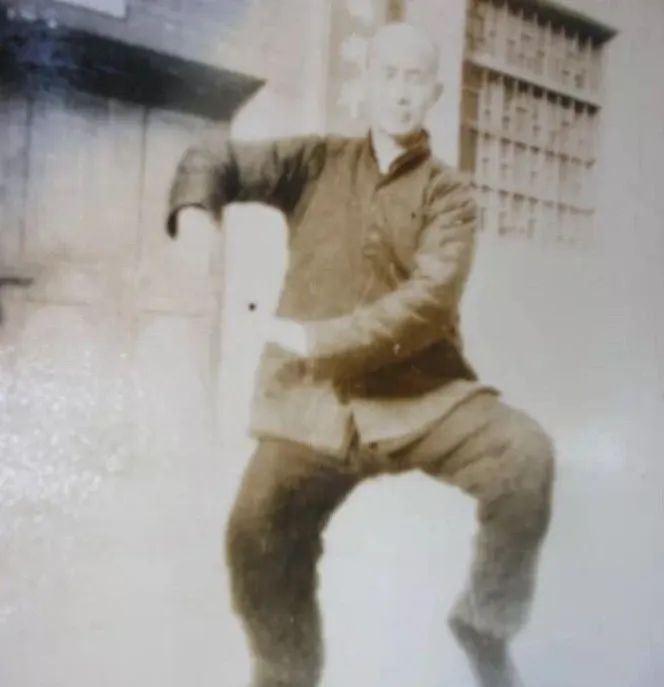
Characteristics of Taijiquan Philosophy
First, Softness. The postures of Taijiquan are stable and expansive, with movements that are light and gentle, not rigid or constrained, following the body’s natural flow, without sudden rises or falls and dangerous jumps, leaving practitioners feeling relaxed and joyful, making it suitable for people of all ages, genders, and constitutions.
Second, Continuity. From the beginning to the end of the form, regardless of whether it is empty or full, the changes in posture are interconnected and seamless, with no visible pauses or connections. The saying “continuous and unbroken, like flowing clouds and water” captures this essence.
Third, Circularity. The movements of the upper limbs in Taijiquan are not direct but always arc-shaped, suitable for the natural bending of joints. Therefore, it was once referred to as “circular movement”. Based on circularity, the entire body can coordinate, be flexible, and allow all organs to receive balanced exercise.
Fourth, Wholeness. Taijiquan movements are centered around the waist, with each posture driven by the torso’s movement of the limbs, where every movement affects all, and every stillness affects all. It requires the alignment of awareness and action, with hands and feet responding to each other. Breathing also synchronizes with the rise and fall of movements, closely coordinating the internal and external, creating a complete unity.
Taijiquan Philosophy
In practicing Taijiquan, understanding is paramount; understanding the right path is essential, and then practice follows.
Do not seek false fame, but true clarity; a famous teacher may not be clear everywhere; a clear teacher may not be famous everywhere.
To master Taijiquan, one must have a lineage, insight, understanding of principles, correct methods, diligent practice, and partner training.
Understanding principles without knowing methods is mere empty talk; knowing methods without understanding nuances means true skills have not been learned; wanting to practice without understanding nuances leads to wasted efforts.
Practicing martial arts is difficult in the heart, yet easy in the heart.
Slow movements are not synonymous with Taijiquan; they are merely one method of practice.
Slow practice is also detailed practice; slow practice can unify the whole body, and when the whole body is unified, it can respond quickly to offense and defense; detailed practice can relax the entire body, and when the body is relaxed, it can adapt to the myriad changes of Taijiquan.
Practicing Taijiquan does not require strength; it utilizes gravitational pull and weight.
Weight can be freely moved and transformed, while strength is artificial and requires deliberate resistance.
No matter what form is practiced, if internal strength is not developed, it is merely an empty form.
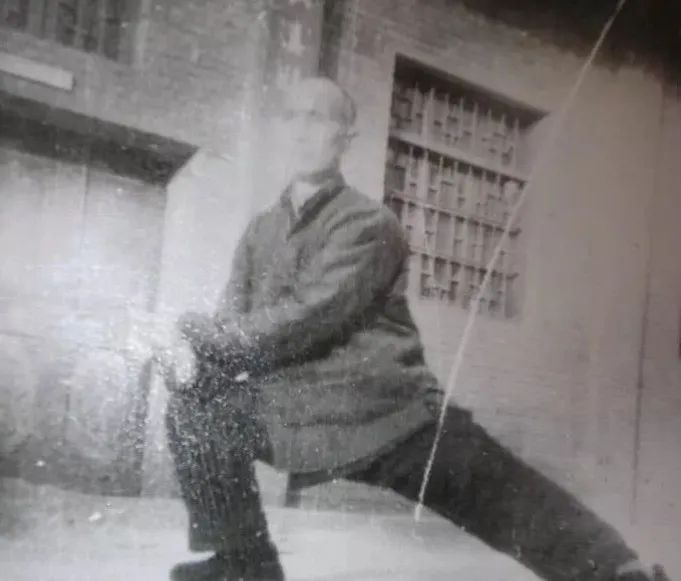
Having form without energy is an empty shell; having energy without form is a blind shell; energy is hidden within form, and form arises from energy!
The more one practices the form, the more refined it becomes; the simpler the techniques, the better.
Practicing the form too differently from the teacher is not good, but practicing it too similarly is also not good.
Simply practicing hard will not improve martial arts; one must think, reflect, and contemplate; one must closely observe the teacher, use the heart, mind, and intention to understand the martial art for significant progress.
Sword and saber are extensions of the fist, which can self-correct and adjust body methods, as well as enrich and enhance internal strength.
“I practice martial arts” means I am primarily practicing this martial art; “the martial art practices me” means using that martial art to practice myself, using the principles and truths within the martial art to change myself; these two realms are entirely different.
Standing post, relaxing the hips, relaxing the waist, relaxing the shoulders and chest, Taijiquan steps, and breathing exercises are the essential foundations of Taijiquan; mastering these will lay a solid foundation for the form and push hands.
Without standing post practice, it is difficult to train the techniques of empty and full in the body.
Reduce one part of external strength, increase one part of internal skill.
The internal skill of Taijiquan is like atomic energy, which can be used for civilian power generation or for explosive warfare; health cultivation requires essence, qi, and spirit, while combat also requires essence, qi, and spirit; without internal skill, it is merely Taijiquan exercise, not Taijiquan martial art.
Heavy sinking and light floating are good things influenced by gravity; the more detailed the practice, the better.
The soles of the feet grasp the ground with the five toes, attracting and repelling with gravitational force.
Relax the upper body to the Laogong point, and relax the lower body to the Yongquan point.
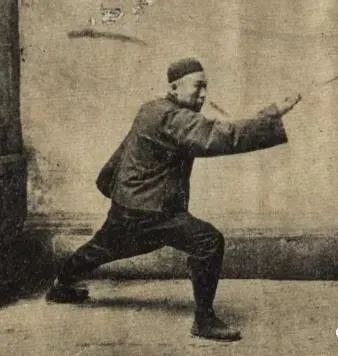
Different stages of practice require different methods.
Practicing Taijiquan requires sensitive neural responses; if the sensitivity decreases, true Taijiquan cannot be practiced.
The form is the body, and push hands are the application; having form without application cannot change; having application without form lacks foundation; knowing and acting together is the true path.
Within relaxation, there is tension; within tension, there is relaxation; the changes of Yin and Yang can be applied in actual combat.
Posture should be relaxed, slow, stable, and even; push hands should be harmonious with energy and qi.
To know how to strike, one must first understand the waist, hips, and Dantian energy.
Without relaxing the chest and sinking the shoulders, how can one achieve the leading energy?
While containing the chest and straightening the back, one should also relax the shoulders and drop the elbows.
Containing the chest allows qi and blood to flow downward, while straightening the back allows energy pathways to flow upward.
While relaxing the waist and sinking the hips, one should also allow qi to sink to the Dantian.
Treat the Dantian as a lever, releasing the body’s strength in one breath; this is internal strength.
Qi sinking to the Dantian does not mean puffing the belly, but rather through actions like relaxing the shoulders, containing the chest, relaxing the abdomen, waist, and hips, all guided by awareness, to organically connect and guide the breath downward.
Relaxed but not sunk is not true relaxation.
The stable posture must also be balanced and symmetrical.
Integrating standing and stepping must be rooted while walking lightly.
Do not practice “rooting” as a rigid “fixed root”; instead, practice it as a flexible, adaptable “root without root”.
Whipping is the essence of softness.
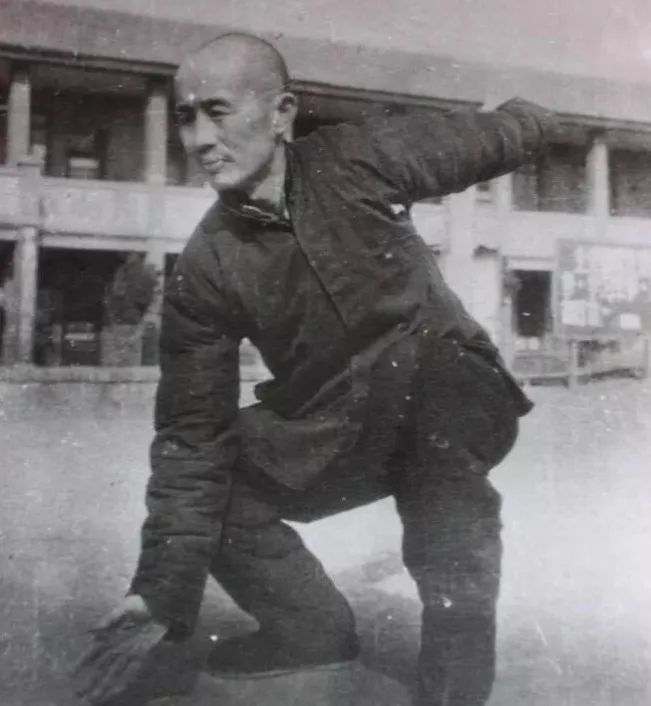
Using softness to counter hardness is true skill; using softness to counter speed is true strength.
Relaxing the shoulders focuses on relaxing the shoulder blades, not the shoulder joints.
If one cannot relax these nine joints (wrist, elbow, shoulder, hip, knee, ankle, tailbone, neck, and top of the head), then the connection is false.
Lightness with floating is not true lightness..
Slowness with dispersion is not true slowness.
Speed with chaos is not true speed.
Heaviness with stagnation is not true stagnation.
Top energy guarding the stance is false stability.
In the midst of stillness, there is stillness; in the midst of stability, there is no constant stability.
Without sinking to the ground’s surface and the elastic rebound of the arms and limbs, how can one achieve peng energy?
Peng energy that reaches the opponent is not true peng energy.
Lu energy that returns to oneself is not true lu energy.
Seek flexibility in slowness, seek steadiness in speed, ultimately achieving lightness with steadiness and steadiness with lightness.
Hiding the heavy lightness is subtle, probing and enticing the opponent; the thunderous release of energy is evident, delivering the hidden heaviness to the opponent.
The waist and hips must follow vertically, while the transitions of the hips must be lateral and forward.
The waist and hips turning is not twisting the waist.
The waist and hips driving the limbs is a passive practice.
Opening the fist and relaxing the waist at the beginning is to transition movements; relaxing the waist at the end of the fist is to sink the energy and borrow the ground’s force.

If one can relax the waist, then qi can sink naturally, enhancing strength and stabilizing the stance.
The skill of the waist is twofold: one is the soft, round, and flexible quality, allowing for the application of countless techniques in offense and defense; the other is the firm, direct whip-like quality, enhancing the power of the strikes.
The root of the waist lies in the hips; the root of the waist and hips lies in the legs; the root of the legs lies in the waist and hips.
If there is no sinking strength in the feet, connecting with the ground, discussing the foundational skills of Taijiquan is futile!
The internal strength of Taijiquan is: “conscious practice leads to unconscious mastery, and subconscious expression”.
Without form, there is no form; without intention, there is no intention; true intention lies within the absence of intention.
When the energy breaks, the intention does not; when the intention breaks, the spirit remains connected.
Martial arts practice involves muscles, bones, and skin; skill cultivation involves essence, qi, and spirit; martial arts skills must be practiced together, integrating the internal and external.
Seek balance in relaxation and tension, seek stability in lightness and heaviness, seek elasticity in curves and straightness, seek resilience in hardness and softness, seek uniformity in speed and slowness, seek integrity in internal and external, seek flexibility in emptiness and fullness, and seek transformation in existence and non-existence.
Taijiquan push hands are a practice of understanding energy through paired training, serving as a bridge between form and free fighting; using push hands to test skills can lead to being hit.
Practice energy before practicing strength; use strength without force.
To absorb and then throw out is to connect with energy.
Listening to energy requires a foundation of relaxation and clarity, gently and evenly supporting the opponent while observing their eyes and reactions.
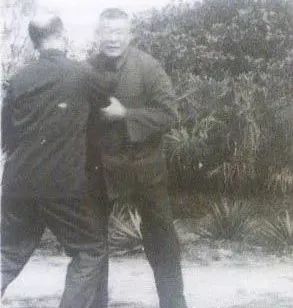
Push hands should follow the opponent’s momentum, borrow their strength, connect with their energy, and gain their skill.
In push hands, the hands follow the body, not the other way around; when issuing energy, the body follows the hands, and the hands serve as a support.
Issuing energy decisively is like throwing a stone, leaving no energy behind.
During the execution of movements or push hands, timely vocalizations (such as “hum”, “ha”, “hi”) can enhance the effectiveness of the technique.
Without a harmonious inner quality and a good mindset, one cannot practice yielding and following in push hands.
Without yielding and following, how can one leverage four ounces to move a thousand pounds?
If someone defeats me, I respect them; if they do not defeat me, I remain humble towards them.
Taijiquan strikes with intention, not with form.
Controlling the tip is inferior to controlling the root; controlling the root is inferior to controlling the body; controlling the body is inferior to controlling the heart.
In push hands, it is essential to distinguish between empty and full, neither pushing nor resisting, transforming Yin and Yang, yielding and following.
Victory in martial arts is secondary; victory in footwork is primary.
Opening and closing, the eight gates and five steps, should be practiced in an S-shape, as it originates from the laws of natural existence.
When entering the application of push hands, one should sink when encountering strength, relax when encountering relaxation, round when encountering circularity, and find balance when encountering balance.
What is just right? It is the natural harmony of Yin and Yang.
“Peng, lu, ji, an, cai, lie, elbow, kao” are not eight different energy paths, nor are they eight different techniques, but rather eight different energy paths and techniques.
If one lacks these basic qualities (will, courage, reaction, speed, technique, skill, strength, physical fitness, tactics, and resistance to strikes), one can play with techniques but cannot practice true combat.

If there are copyright issues, please contact the original author through the backend.The articles published are for learning and reference only.Please practice under the guidance of a professional teacher.
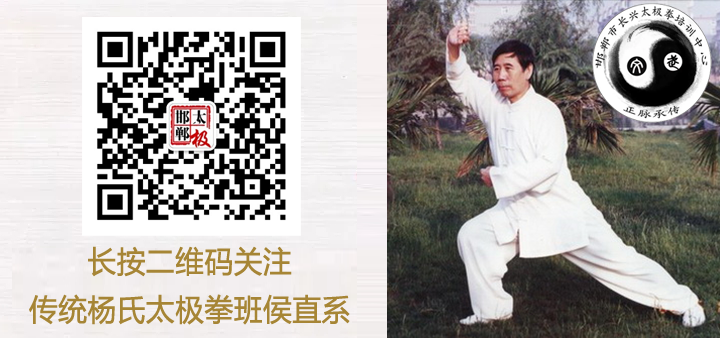
Official website http://www.yunshuiwang.com



